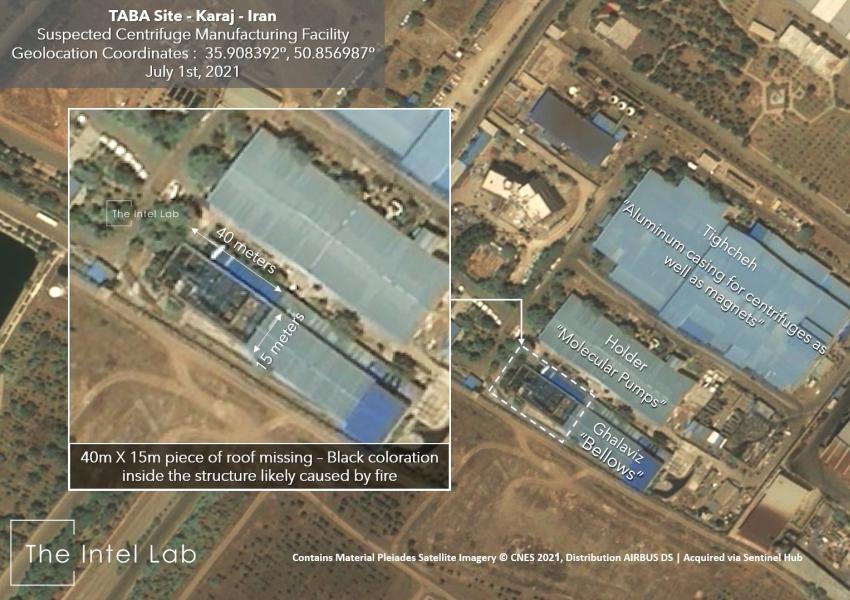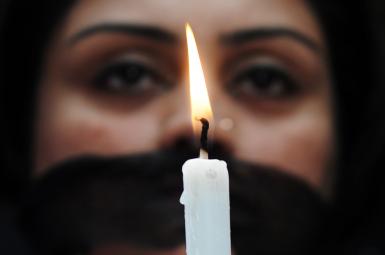
Consultants Claim Satellite Shows Damage At Iran’s Karaj Nuclear Site
Intel Lab intelligence and imagery consulting firm says satellite images from July 1 show one building of the Atomic Energy Organization of Iran (AEOI) near Karaj, Alborz province, was damaged in a June 23 attack, contrary to a denial at the time by Nour News, a website close to Iran's Supreme National Security Council (SNSC).
The Intel Lab in Twitter posts with three satellite images Saturday showed the facilities at different times. Intel Lab said images taken June 26 showed a small dark spot on the roof of the building that was not there in images taken June 21. By July 1 the roof looked dismantled as part of cleaning.
At the time Iranian authorities made no comments on the alleged attack, although the AEOI published on its website without any further details a report in Nour News that an attack had been foiled without damage.
The New York Times reported June 23 that the targeted building was “one of Iran’s main manufacturing centers” for centrifuges used for enriching uranium at the Fordow and Natanz sites, “according to an Iranian familiar with the attack and to a senior intelligence official."
The Times claimed the attack had been conducted by a drone. The Jerusalem Post quoted unnamed “sources” claiming that an attack had caused major damage but added that it could not verify the information.
Ori Elmakayes, an Israeli twitteratus, wrote in a tweet Saturday that the Intel Lab images made a drone, or unmanned ariel vehicle, an unlikely culprit. "The most logical scenario is the internal explosion of an explosive device that was pre-planted in the facility and not necessarily as a UAV as the Iranian media that claimed that the attack was completely thwarted said. According to overseas reports, the operation in Iran was carried out with significant Israeli support, both intelligence and operational.”
AEOI describes the Karaj facility as founded in 1974 and utilizing nuclear technology for improving the "quality of soil, water, agricultural and livestock production."
The incident followed other attacks on Iran's nuclear program. In April, Iran's underground Natanz facility experienced a blackout damaging some centrifuges. Iran denounced “nuclear terrorism” designed to raise tensions as it met world powers to revive the 2015 deal limiting Iran’s atomic program, a deal the Israeli government opposed.
Last year, Natanz suffered an explosion at its advanced centrifuge assembly plant that authorities later called sabotage. Iran is rebuilding the facility deep inside a nearby mountain.Israel was widely thought responsible for the Natanz attacks, and Tehran also blamed Israel for November’s killing of Mohsen Fakhrizadeh, a nuclear scientist, the latest in a series going back to 2010.




